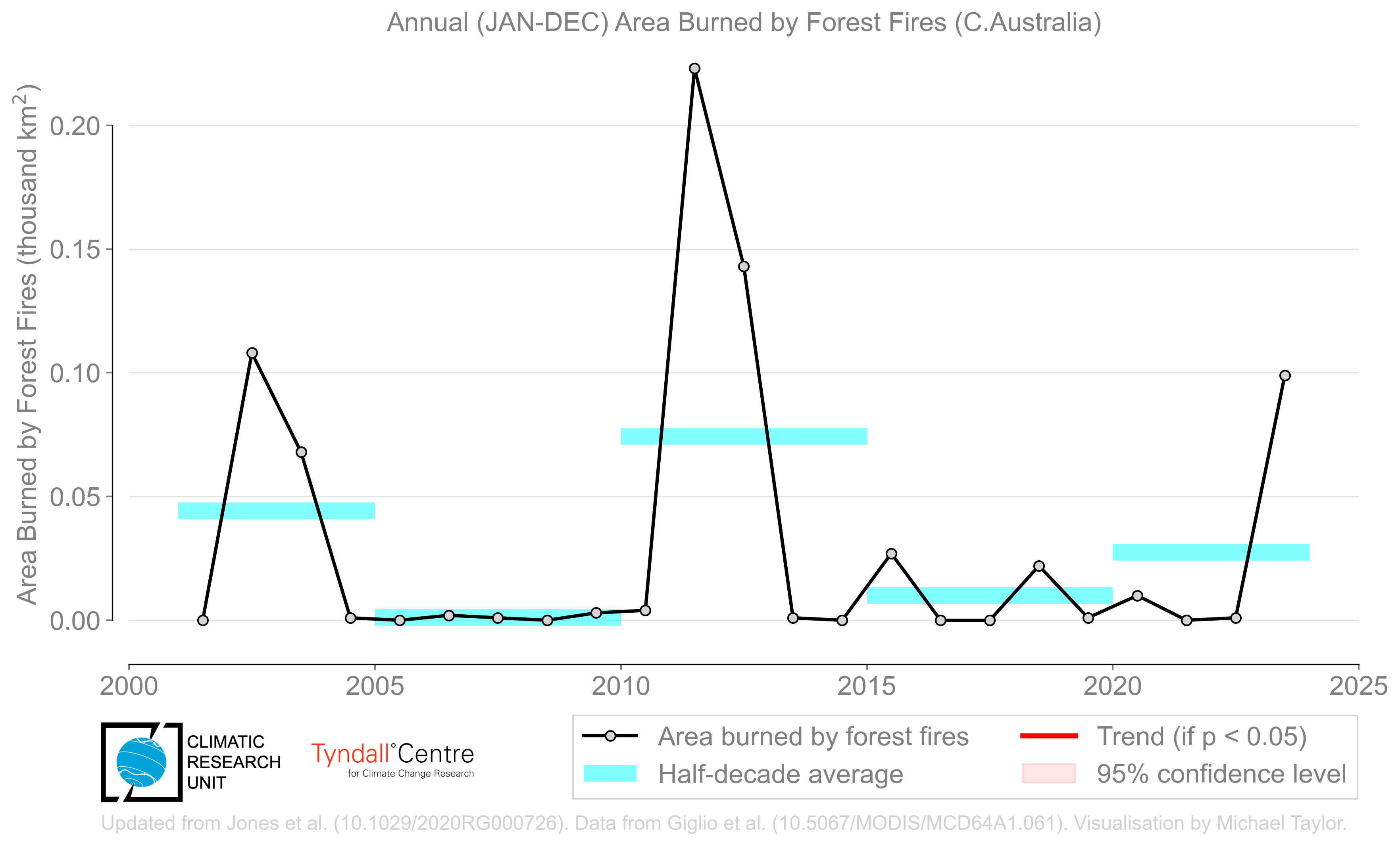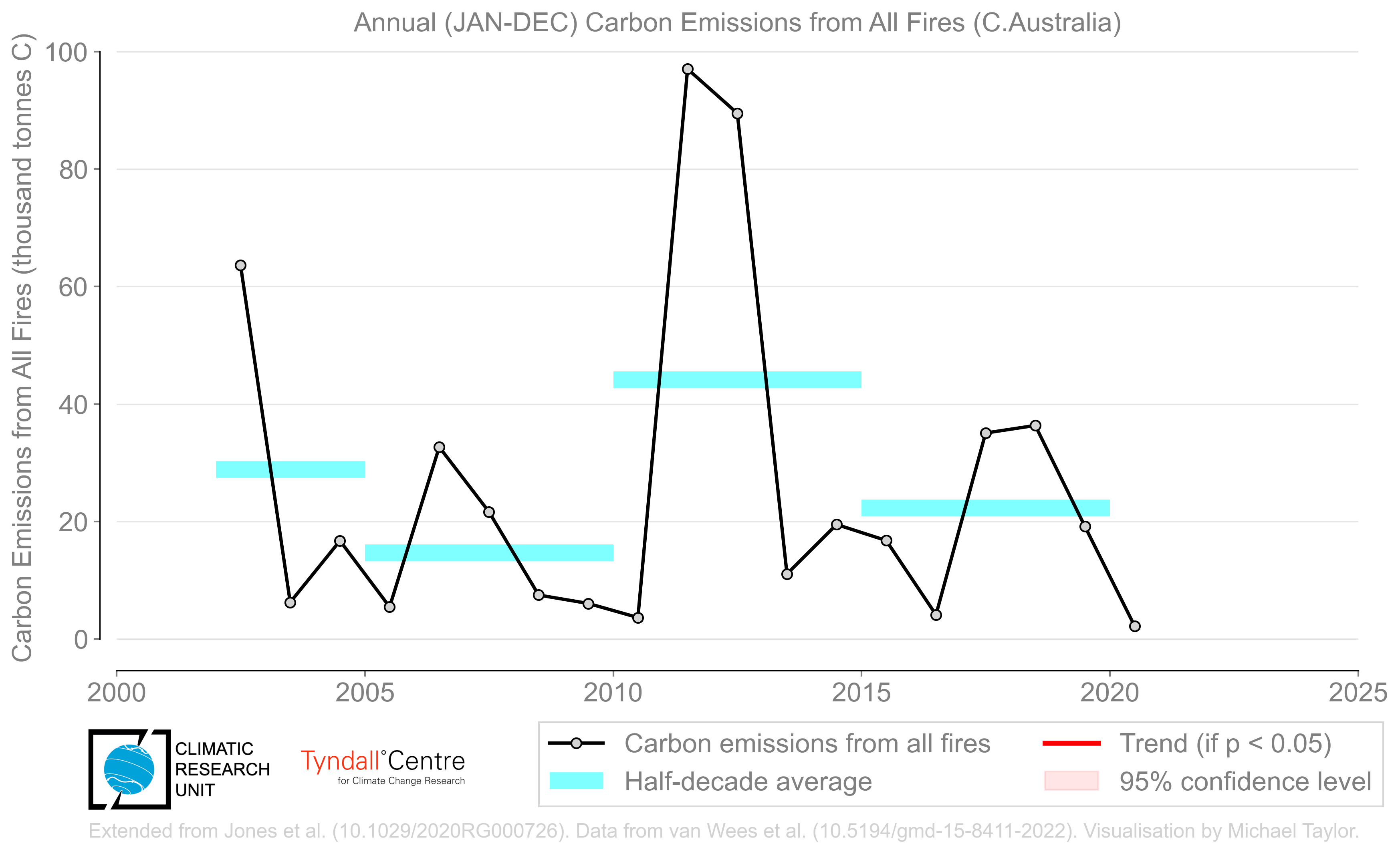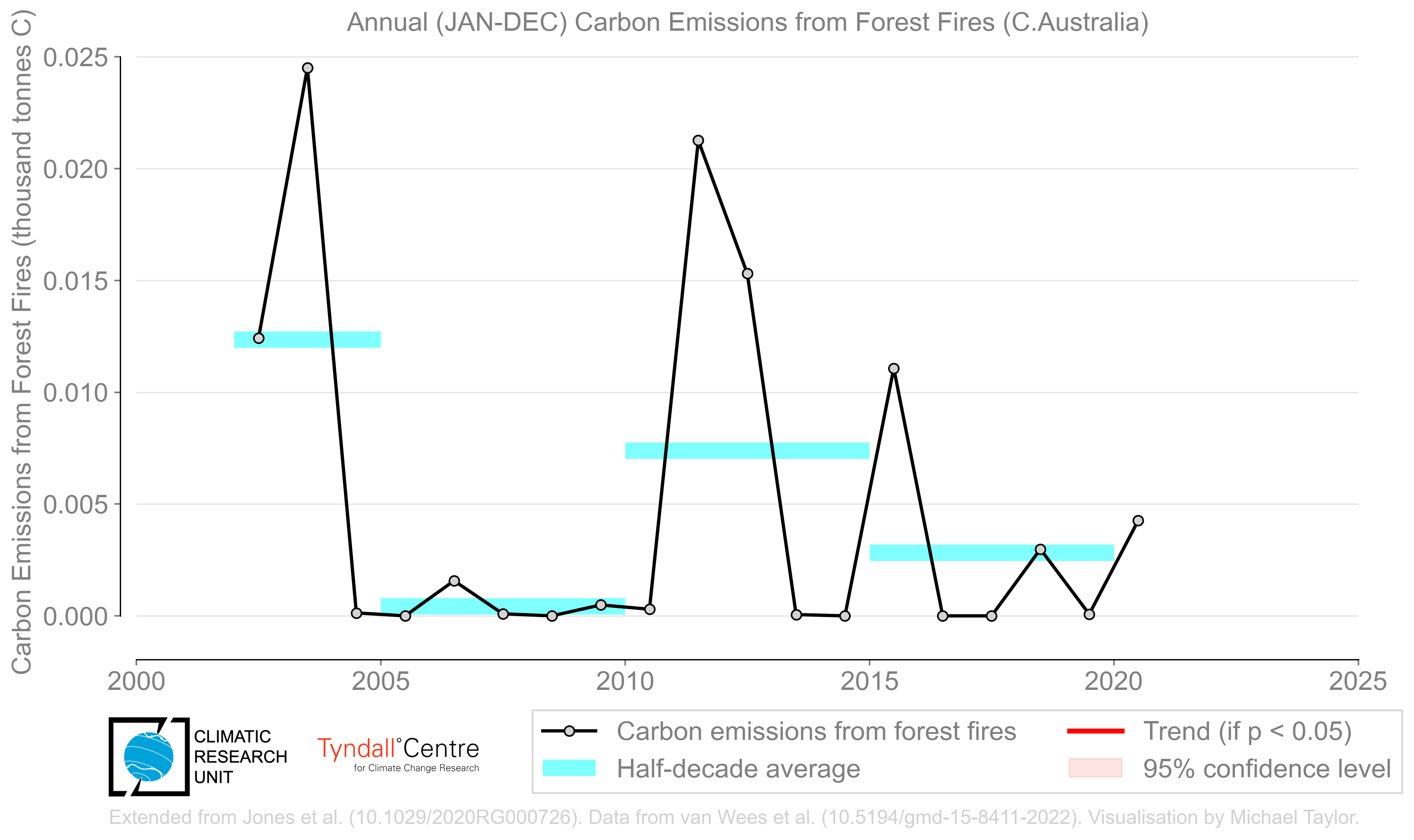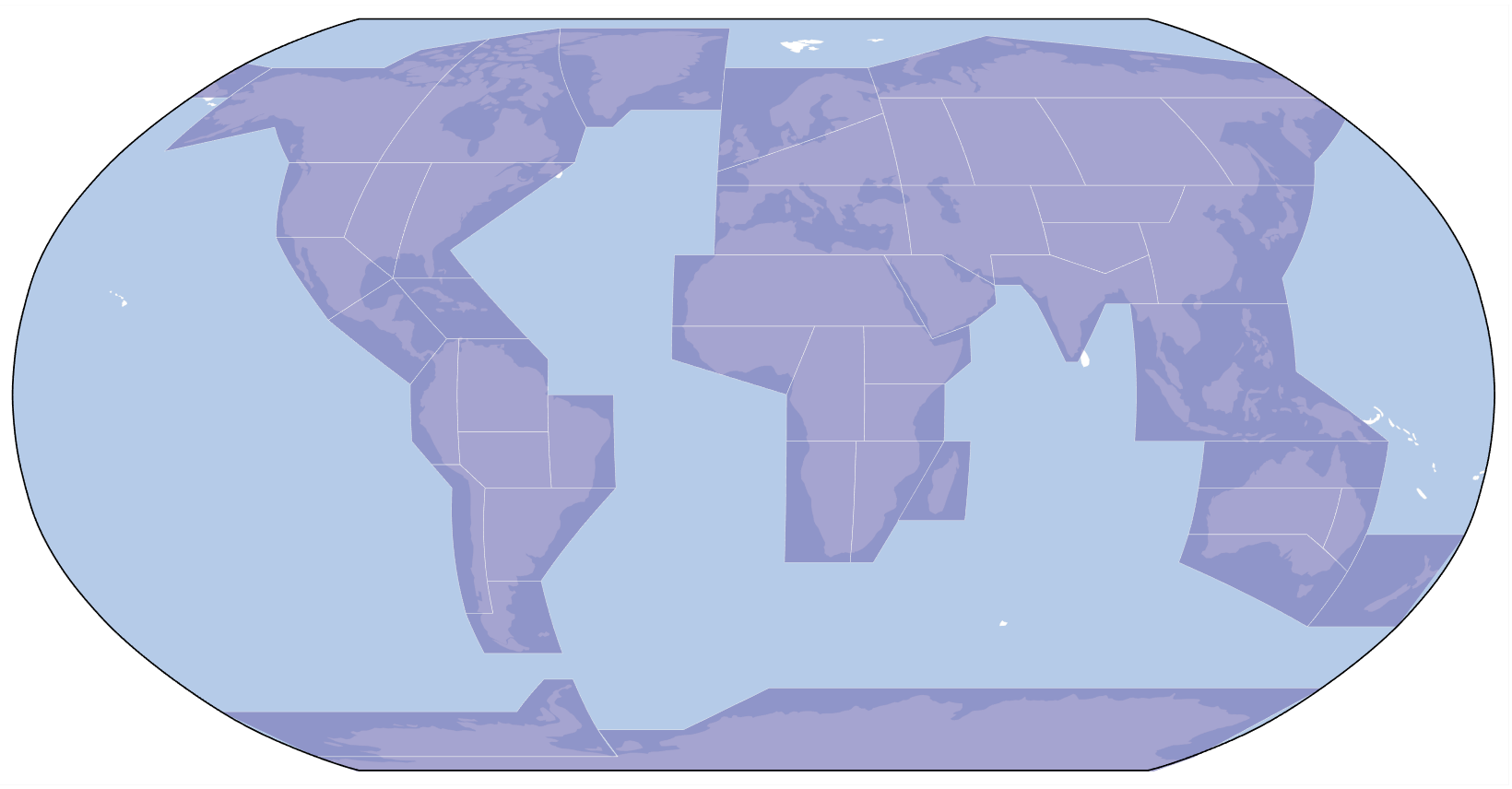Seasonal (DJF)
Seasonal (MAM)
Seasonal (JJA)
Seasonal (SON)
Yearly (JUL-JUN)
Yearly (JAN-DEC)
C.Australia (CAU)

Area Burned by All Fires
Includes fires detected by the MODIS burned area product with 500m resolution
(MCD64A1c6.1; Giglio et al., 2018)

Area Burned by Forest Fires
Forests are any areas with tree cover over 30%, based on the MODIS vegetation continuous field product with 250m
(MCD12Q1c6.0; Giglio et al., 2018)

Carbon Emissions from All Fires
Emissions from all fires based on the 500m GFED product driven by MCD64A1c6.1
(van Wees et al., 2023)

Carbon Emissions from Forest Fires
Emissions from forest fires based on the 500m GFED product driven by MCD64A1c6.1
(van Wees et al., 2023)
NOTES
Processing
Set the timescale using the radio buttons. Selecting an IPCC AR6 region will take you to a page showing the timeseries of all variables processed.
Regional aggregation
The raw data is at 0.25 degrees resolution. The IPCC AR6 land region mask is used to compute aggregated totals at the monthly, yearly (JAN-DEC), yearly (JUL-JUN), seasonal (DJF), seasonal (DJF), seasonal (MAM), and seasonal (SON) timescales. The IPCC AR6 land regions abbreviations have the following meaning:
- GIC Greenland/Iceland
- NWN N.W.North-America
- NEN N.E.North-America
- WNA W.North-America
- CNA C.North-America
- ENA E.North-America
- NCA N.Central-America
- SCA S.Central-America
- CAR Caribbean
- NWS N.W.South-America
- NSA N.South-America
- NES N.E.South-America
- SAM South-American-Monsoon
- SWS S.W.South-America
- SES S.E.South-America
- SSA S.South-America
- NEU N.Europe
- WCE West & Central-Europe
- EEU E.Europe
- MED Mediterranean
- SAH Sahara
- WAF Western-Africa
- CAF Central-Africa
- NEAF N.Eastern-Africa
- SEAF S.Eastern-Africa
- WSAF W.Southern-Africa
- ESAF E.Southern-Africa
- MDG Madagascar
- RAR Russian-Arctic
- WSB W.Siberia
- ESB E.Siberia
- RFE Russian-Far-East
- WCA W.C.Asia
- ECA E.C.Asia
- TIB Tibetan-Plateau
- EAS E.Asia
- ARP Arabian-Peninsula
- SAS S.Asia
- SEA S.E.Asia
- NAU N.Australia
- CAU C.Australia
- EAU E.Australia
- SAU S.Australia
- NZ New-Zealand
- EAN E.Antarctica
- WAN W.Antarctica
Variables
(1) Area Burned by All Fires
The total area burned by fires in the region in units of thousands of km².
(2) Area Burned by Forest Fires
The total burned area by forest fire in the region from gridcells having 30% tree cover in units of thousands of km².
(3) Carbon Emissions from All Fires
The total carbon emissions from all fires in the region in units of thousands of tonnes of C.
(4) Carbon Emissions from Forest Fires
The total carbon emissions from forest fires in the region from gridcells having 30% tree cover in units of thousands of tonnes of C.
Data export
The underlying data for each plot is in CSV format.
Statistics
The timeseries are fit with a robust OLS regression (Theil-Sen) and a regression t-test is performed to determine if the OLS slope is significant at the 95% confidence level (p < 0.05, alpha = 0.05). This is only shown when the alternative hypothesis is true. The uncertainty band for the 95% confidence interval on the slope and intercept is provided. For each timescale (with the exception of the monthly data), 5-yr means are shaded as a visual guide to help understand the variability and potential trend in the data.
Page created on 2023-11-28 by Michael Taylor (CRU/UEA) for the UEA PVC impact study project with Matt Jones and Tim Osborn.
